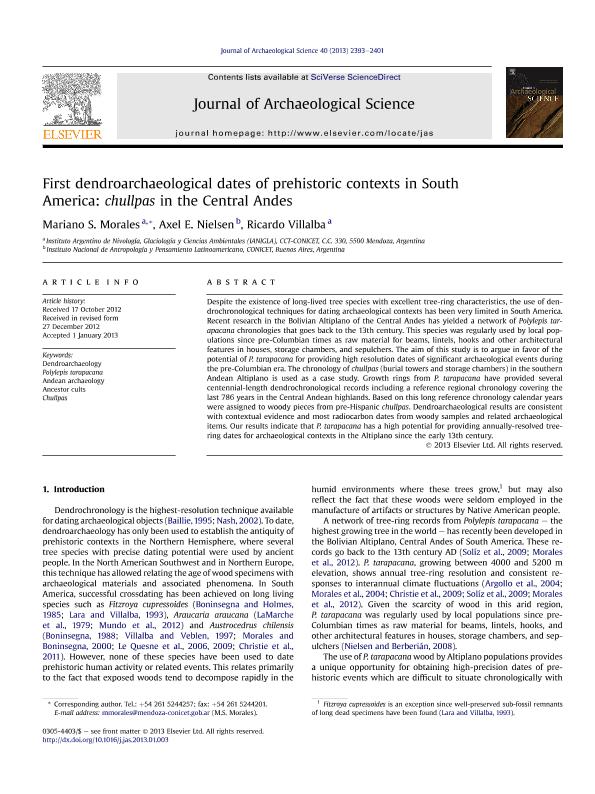Artículo
First dendroarchaeological dates of prehistoric contexts in South America: chullpas in the Central Andes
Fecha de publicación:
04/2013
Editorial:
Elsevier
Revista:
Journal Of Archaeological Science
ISSN:
0305-4403
Idioma:
Inglés
Tipo de recurso:
Artículo publicado
Clasificación temática:
Resumen
Despite the existence of long-lived tree species with excellent tree-ring characteristics, the use of dendrochronological techniques for dating archaeological contexts has been very limited in South America. Recent research in the Bolivian Altiplano of the Central Andes has yielded a network of Polylepis tarapacana chronologies that goes back to the 13th century. This species was regularly used by local populations since pre-Columbian times as raw material for beams, lintels, hooks and other architectural features in houses, storage chambers, and sepulchers. The aim of this study is to argue in favor of the potential of P. tarapacana for providing high resolution dates of significant archaeological events during the pre-Columbian era. The chronology of chullpas (burial towers and storage chambers) in the southern Andean Altiplano is used as a case study. Growth rings from P. tarapacana have provided several centennial-length dendrochronological records including a reference regional chronology covering the last 786 years in the Central Andean highlands. Based on this long reference chronology calendar years were assigned to woody pieces from pre-Hispanic chullpas. Dendroarchaeological results are consistent with contextual evidence and most radiocarbon dates from woody samples and related archaeological items. Our results indicate that P. tarapacana has a high potential for providing annually-resolved tree-ring rates for archaeological contexts in the Altiplano since the early 13th century.
Palabras clave:
Dendroarchaeology
,
Polylepis Tarapacana
,
Andean Archaelogy
,
Ancestor Cuits
Archivos asociados
Licencia
Identificadores
Colecciones
Articulos(IANIGLA)
Articulos de INST. ARG. DE NIVOLOGIA, GLACIOLOGIA Y CS. AMBIENT
Articulos de INST. ARG. DE NIVOLOGIA, GLACIOLOGIA Y CS. AMBIENT
Articulos(SEDE CENTRAL)
Articulos de SEDE CENTRAL
Articulos de SEDE CENTRAL
Citación
Morales, Mariano Santos; Nielsen, Axel Emil; Villalba, Ricardo; First dendroarchaeological dates of prehistoric contexts in South America: chullpas in the Central Andes; Elsevier; Journal Of Archaeological Science; 40; 5; 4-2013; 2393-2401
Compartir




